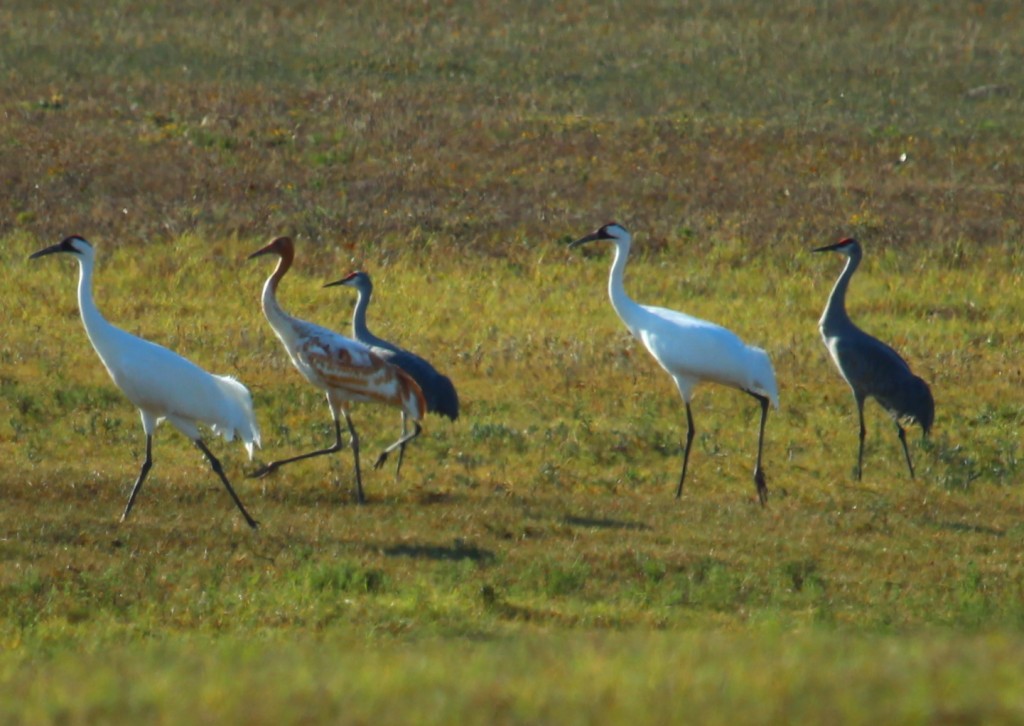By Chester McConnell, Whooping Crane Conservation Association
Whooping cranes, being our national symbol of conservation, create tremendous interest. All birders would love to have whoopers on their “life list”. Indeed, the average nature buff gets all excited when they are lucky enough to see a whooping crane. And you have got to be lucky or, for many, be willing to travel long distance to observe these magnificent, endangered birds.
They are the tallest bird in North America, standing nearly 5 feet tall, with a 7 foot wing span, so why are they so hard to find. Well, first there are only 405 known to be in the wild. And most spend several months nesting in the vast wetlands of northern Canada at Wood Buffalo National Park, a place very difficult to get to. Then when these approximate 266 Wood Buffalo birds migrate south in winter, the total Western flock will be scattered along a 200 mile wide by 2,400 mile long migration corridor. And about 139 birds in the Eastern flock will be stretched from Wisconsin to Florida and Louisiana. So this equates to a few whoopers in a vast area. Now you know why you have got to be lucky to spot some of these cranes.
But a lucky few do get to see the whoopers. We know because they report to the Whooping Crane Conservation Association on our web page by clicking on the link: https://whoopingcrane.com/report-a-sighting/ . Normally we receive about 130 reports annually. Our citizen observers report on whoopers located along the migration route from Saskatchewan, Canada to Aransas, Texas and from Wisconsin to Florida. We keep a map showing locations of the reports. Likewise some federal and state agencies also keep their records. Collectively, we attempt to gather as much information as possible to help protect and learn more about whooping cranes.
A number those reporting to the Whooping Crane Conservation Association sent us photos of their observations. One of the photos is shown below. To view more photos, click on the following link: Whooper photos 8 for web article 11-29-12

Two adults and one juvenile whooping crane with two sandhill cranes, Rock Port, Texas.
Photo by: Peggy Diaz
The best place to see whoopers is when they reach their winter habitat at Aransas National Wildlife Refuge along the Texas coast. You can ride along refuge roads and see some in fields and marsh land. Or you can climb the new tower on the Refuge and observe whoopers over a vast marsh area. But possibly the best way to observe them is to get on one of the commercial boats at Rockport, TX and ride out to make your observations.

